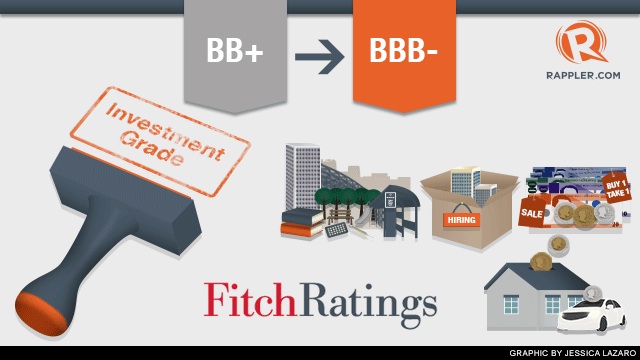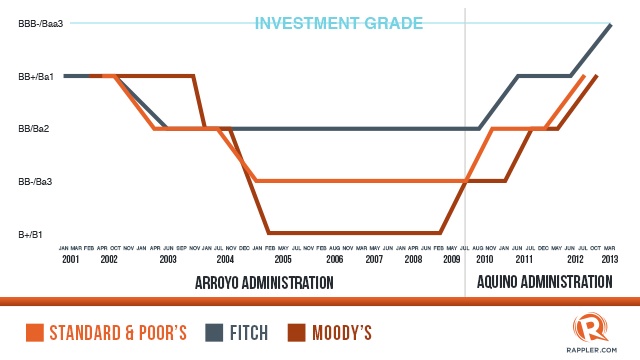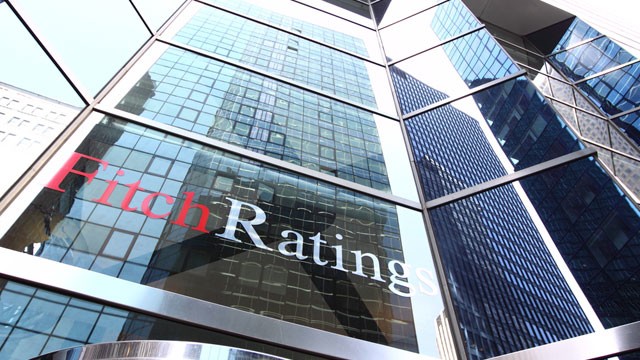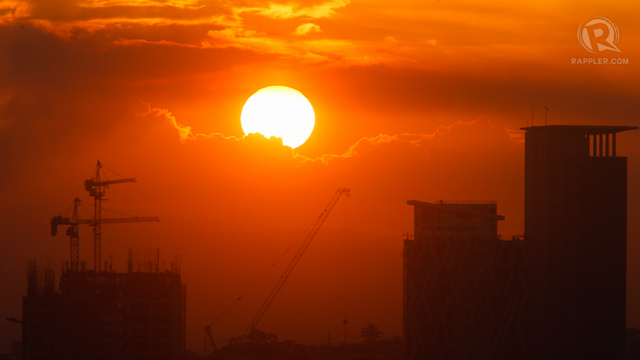Set to be ‘one of world’s fastest growth rates’
By Michelle V. RemoPhilippine Daily Inquirer
The Philippines has grabbed the spotlight amid a lackluster global economy, with a think tank describing it as a “rising star” poised to record one of the fastest growth rates in the world and a credit-rating firm raising its growth forecast for the country.
Moody’s Analytics said in a report released Wednesday that the Philippines is likely to grow between 6.5 and 7 percent this year and within the same range next year, outperforming not only the anemic advanced economies but also many robustly growing emerging markets.
It also said that if favorable economic trends continue, the growth rate for the Philippines could be close to 8 percent by 2016.
“The Philippines has been among the brightest parts of a generally gloomy global picture,” Moody’s Analytics said in the report, titled “Philippines Outlook: Asia’s Rising Star” and authored by its senior economist Glenn Levine.
It said the story of the Philippines was noteworthy, noting that the country swung from being a “perennial underachiever” in Asia until the last few years.
Moody’s Analytics, a sister company of credit rating watchdog Moody’s Investor Service, said the country’s 6.6-percent growth in 2012 was achieved despite weak growth in the United States, a crisis in the eurozone and a slowdown in China.
It said the problems of the United States, the eurozone and China—
key export markets—significantly dampened the performance of other economies last year.
Sustainable growth
The Philippines, however, managed to temper the drag of a weak external environment because of a strong household consumption, a nascent rise in private investments and a spike in government spending.
S&P’s rosy forecast
“This impressive rate of GDP [gross domestic product] growth [last year] looks sustainable, as risks are low and most sectors of the economy are growing solidly. We expect GDP growth to remain in the 6.5 to 7-percent range in 2013 and 2014, making the Philippines one of the world’s fastest-growing economies,” Moody’s Analytics said.
Echoing a similar tune, international credit-rating firm Standard & Poor’s has raised its growth forecast for the Philippines for this year from 5.9 to 6.5 percent. At the same time, it said the economy was expected to post another robust growth of 6.3 percent in 2014.
S&P’s updated growth projections for the Philippines were cited in its latest report on Asia, which it said would grow by a decent pace this year and next year as a region. But, it said, the impact of external factors on individual countries would vary.
Domestic demand strong
The credit rating agency said the advantage of the Philippines—together with a few neighbors namely China, Indonesia, Malaysia, Thailand and Vietnam—was that domestic demand was strong and so any adverse impact of weak global demand on the country’s exports would not significantly harm its overall growth.
“China and the Asean 5—Indonesia, Malaysia, Philippines, Thailand and Vietnam—are more domestically driven and, therefore, continue to enjoy relatively high and stable growth rates. This is not the case elsewhere,” S&P said in the report, titled “Emerging Asia Will Grow but Won’t Be Firing on All Cylinders.”
S&P also said that unlike other countries, the Philippines and the rest of the Asean 5 were not expected to suffer from the weakening yen, a trend that has alarmed advanced economies and some Asian economies.
Weakening yen
This was because the Philippines and the four other Southeast Asian economies were net importers of goods from Japan. A weakening yen, therefore, would actually be beneficial as this would make Japanese imports cheaper.
Anticorruption agenda
Moody’s Analytics, meanwhile, highlighted the benefits of the anticorruption agenda of the Aquino administration.
It said the reform programs of the current administration had significantly improved business sentiment in the Philippines.
“The government’s 2011-2016 development plan provides a five-year blueprint for growth and development, providing transparency, predictability and accountability. The crackdown on corruption and encouragement of local and foreign investments, in particular, have worked well,” it said.






